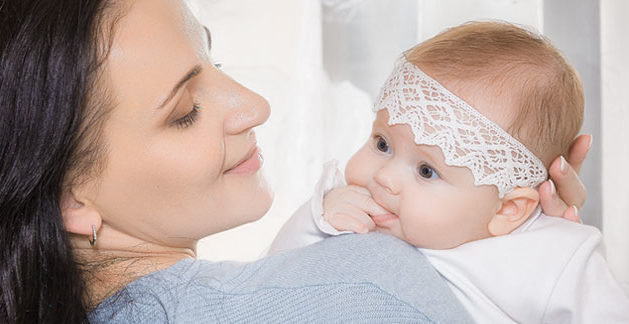Breastfeeding positions

If your initial attempts at breastfeeding seem tedious and uncomfortable, don’t give up. With some trial-and-error, you might find the breastfeeding positions that work for both you and your baby. Find out more about how to position your baby for feeding.
Correct breastfeeding positions are important to ensure you and your baby are both comfortable and that your baby is properly latched.
Here are some tips to facilitate correct positioning:
- You should be comfortable, with your back supported, your trunk facing forward and your lap flat.
- Your baby’s face should be facing your breast (not the ceiling) and his body should be in line.
- Baby’s mouth should be across from your nipple or even slightly below.
- You can support your baby in different ways, using your arms and pillows.
- Feeds can last between five and forty minutes, so make sure you find a comfortable place and position before you start.
While breastfeeding, make sure that the baby’s mouth open and covering as much of the areola (the dark area around the nipple) as possible. If baby’s latch hurts, break the suction by gently inserting your little finger between your baby’s gums and your nipple, and try again. Once your baby latches on properly, they will be able to do the rest. It’s a good idea to have a drink beside you when you settle down to breastfeed. Water, milk and unsweetened fruit juices are all good choices.
Football Hold
This is a good choice for caesarean births, women who have large breasts or who are nursing small babies or twins.

- Hold your baby at your side on one arm, with your elbow bent and your open hand firmly supporting your baby head
- With your free hand, support your breast from the underside in a C – shaped
Cradle Hold
This breastfeeding position is the most commonly used by women all over the world.

- Cradle your baby in your arms with your baby’s head resting comfortably in the crook of the elbow on the same side as the breast you are feeding with
- Support your baby’s back using your forearm
- Use your free hand to support your breast
Cross-Cradle Hold
This is a good position for the first days and weeks while you and your baby are learning how to breastfeed and also if the baby is small in size.

- Bring your baby across the front of your body, tummy to tummy
- Hold your baby with the arm opposite to the breast you are feeding with
- Support the back of baby’s head with your open hand
- With your free hand, support your breast from the underside in a U shaped hold to align with the baby’s mouth
Laying down

- Lay comfortably.
- Bring your baby close and lay him on his side, facing you.
- Lift the breast up with upper hand and stroke baby’s mouth with nipple until he opens his mouth wide and properly latches onto your breast for feeding
- Get comfortable by putting one of your arms under your head and the other on a pillow.
* Avoid this position if you are sleepy for risk of falling asleep on top of your baby





